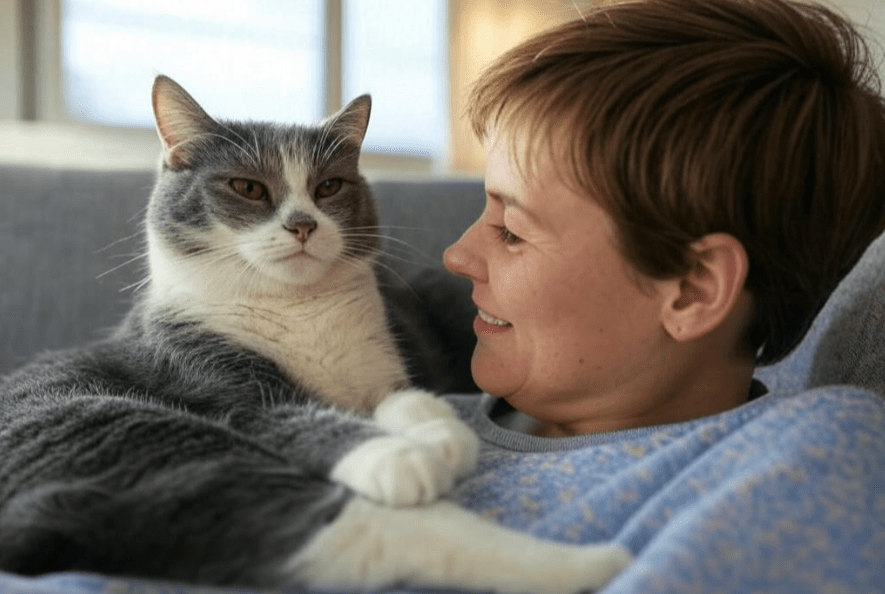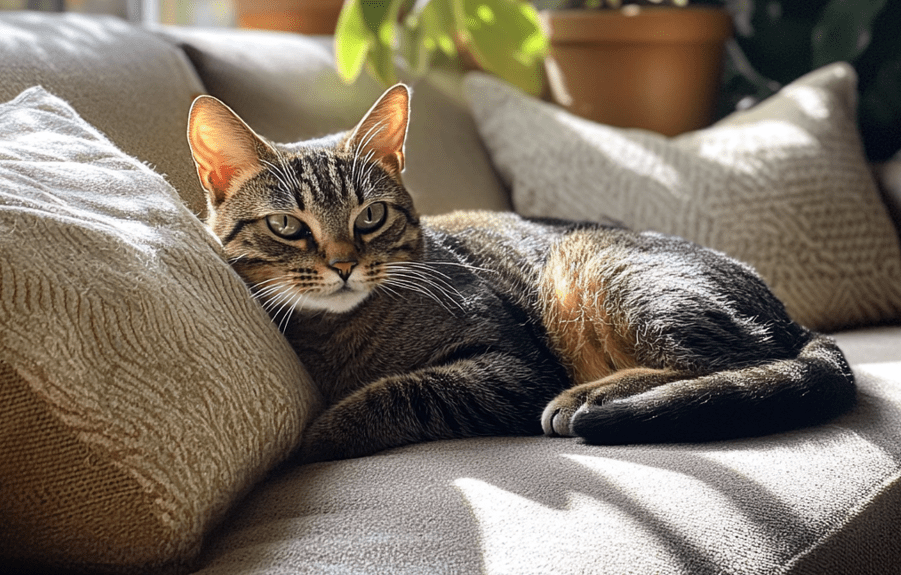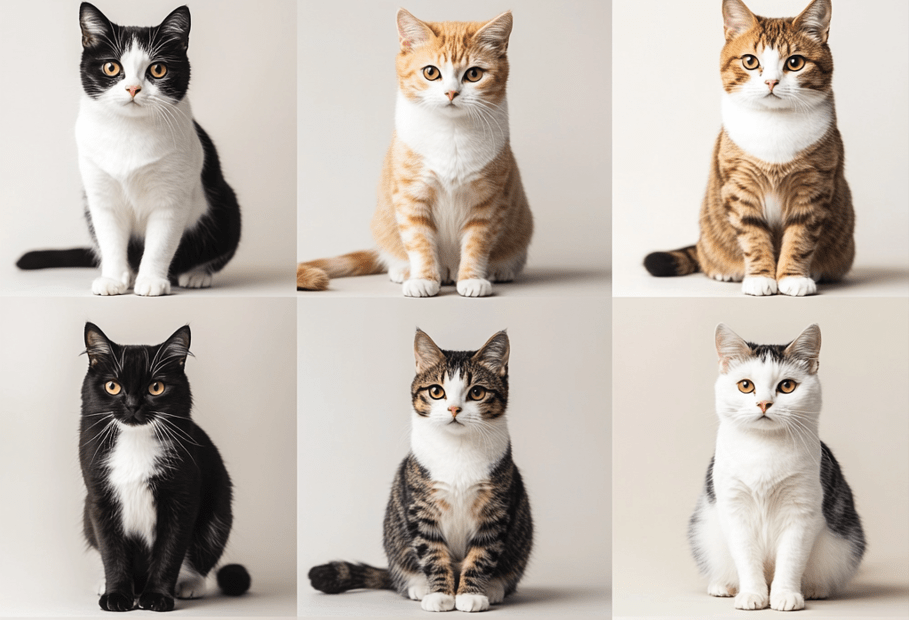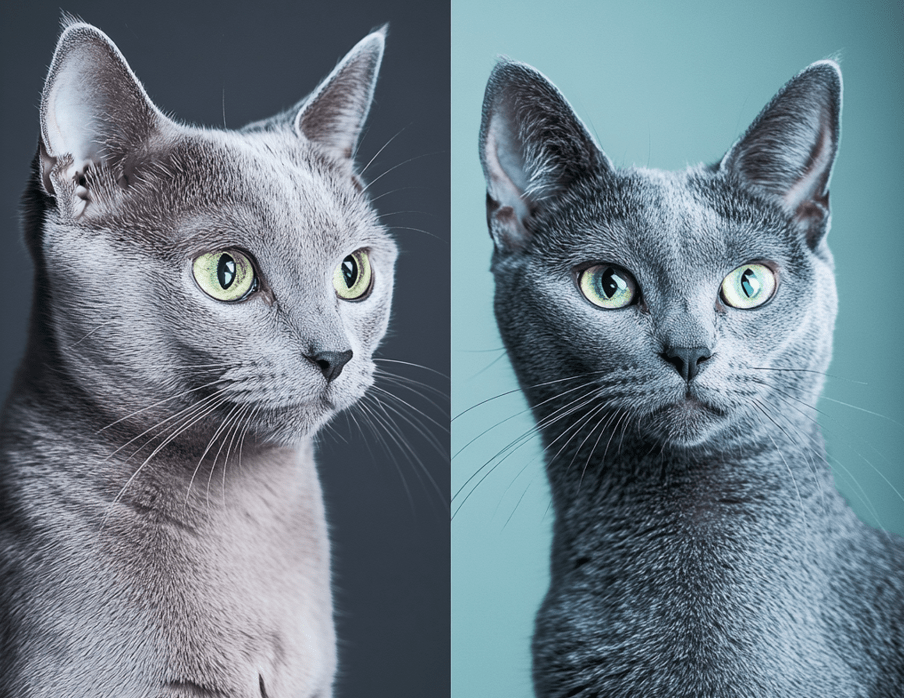
Choosing the right cat carrier for Domestic Shorthair cats is essential for their comfort and safety during travel, vet visits, or emergencies. Domestic Shorthairs, known for their playful and adaptable nature, can be sensitive to confinement, making the selection of a suitable pet carrier a critical decision. A poorly chosen carrier can lead to stress, discomfort, or even resistance from your feline friend. This comprehensive guide will help you select a cat carrier for Domestic Shorthair that ensures your cat feels secure, comfortable, and calm, whether you’re heading to the veterinarian or embarking on a road trip.
In this article, we’ll explore the key factors to consider when choosing a cat carrier, including size, material, ventilation, ease of cleaning, and safety features. We’ll also provide practical tips to make your Domestic Shorthair love their carrier, along with recommendations for top-rated carriers based on expert insights and user reviews. By the end, you’ll have all the information you need to choose a carrier that your cat won’t hate.
Why Choosing the Right Cat Carrier Matters for Your Domestic Shorthair

Domestic Shorthairs are one of the most common cat breeds, known for their diverse personalities, agility, and curiosity. While they are generally adaptable, many cats, including Domestic Shorthairs, dislike being confined in unfamiliar spaces. A poorly designed cat carrier for Domestic Shorthair can make trips stressful for both you and your pet. Here’s why selecting the right carrier is so important:
Stress Reduction: A comfortable carrier with adequate space and ventilation can minimize anxiety during travel.
Safety: A secure carrier prevents escapes and protects your cat from sudden movements, especially in a car.
Convenience: Easy-to-clean and portable carriers make your life easier, whether you’re visiting the vet or traveling long distances.
Positive Association: A carrier your Domestic Shorthair enjoys can become a safe space, reducing resistance over time.
By understanding your cat’s needs and preferences, you can choose a carrier that turns a potentially stressful experience into a calm and pleasant one.
Key Factors to Consider When Choosing a Cat Carrier for Domestic Shorthair
To select the best cat carrier for Domestic Shorthair, consider the following factors. Each element plays a crucial role in ensuring your cat’s comfort and safety.
1. Size and Space
The size of the carrier is one of the most important considerations. Domestic Shorthairs typically weigh between 8 and 15 pounds, with an average length of 14 to 20 inches (excluding the tail). The carrier should be large enough for your cat to stand, turn around, and lie down comfortably but not so large that they slide around during transport.
Ideal Dimensions: Look for a carrier that is at least 1.5 times the length and height of your cat. For most Domestic Shorthairs, a carrier measuring approximately 24”L x 16”W x 16”H works well.
Weight Capacity: Ensure the carrier can support your cat’s weight, especially if you have a larger Domestic Shorthair.
Tip: If you’re unsure about sizing, measure your cat from nose to the base of the tail and add a few inches for comfort.
2. Material and Durability
Cat carriers come in various materials, each with its pros and cons. The material affects durability, weight, and ease of cleaning.
Hard-Sided Carriers: Made of plastic, these are durable, easy to clean, and provide excellent protection. They’re ideal for car travel or vet visits but can be heavier.
Soft-Sided Carriers: Made of fabric or nylon, these are lightweight and portable, making them great for short trips or air travel. However, they may not be as durable for rough use.
Hybrid Carriers: Combine hard and soft elements for a balance of durability and portability.
For Domestic Shorthairs, hard-sided carriers are often recommended for their sturdiness, especially if your cat tends to scratch or chew. Look for carriers with reinforced corners and high-quality zippers or latches.
3. Ventilation and Visibility
Proper ventilation is critical to keep your Domestic Shorthair comfortable and calm. A carrier with multiple ventilation holes or mesh panels ensures adequate airflow and prevents overheating.
Ventilation Guidelines: At least three sides of the carrier should have ventilation openings.
Visibility: Some cats feel reassured when they can see their surroundings, while others prefer more enclosed spaces. Mesh windows or transparent panels can provide visibility without compromising security.
Tip: Observe your Domestic Shorthair’s behavior to determine whether they prefer a more open or enclosed carrier.
4. Ease of Access
A carrier with multiple entry points makes it easier to place your cat inside and take them out. Look for carriers with:
Top-Loading Doors: These allow you to gently lower your cat into the carrier, reducing stress.
Front or Side Doors: Useful for quick access during vet visits or emergencies.
Wide Openings: Ensure the door is large enough for your Domestic Shorthair to enter and exit comfortably.
5. Safety Features
Safety is paramount when choosing a cat carrier for Domestic Shorthair. Key safety features include:
Secure Latches or Zippers: Prevent accidental escapes, especially if your cat is an escape artist.
Seatbelt Straps: For car travel, choose a carrier with straps or loops to secure it to the vehicle’s seat.
Non-Slip Base: A padded or non-slip interior prevents your cat from sliding during transport.
6. Ease of Cleaning
Accidents happen, especially during stressful trips. A carrier that’s easy to clean will save you time and effort.
Removable Pads: Look for carriers with washable, removable pads or liners.
Water-Resistant Materials: These make it easier to wipe down spills or messes.
Tip: Place an absorbent puppy pad or towel inside the carrier for added protection.
7. Portability
Consider how you’ll be using the carrier. If you’re traveling by car, a heavier hard-sided carrier may be fine. For air travel or walking, a lightweight soft-sided carrier with shoulder straps or handles is more practical.
Weight: Ensure the carrier’s weight, combined with your cat’s weight, is manageable for you to carry.
Handles and Straps: Ergonomic handles or padded shoulder straps improve comfort during transport.
8. Airline Compatibility
If you plan to travel by air with your Domestic Shorthair, ensure the carrier meets airline requirements. Most airlines require:
Soft-Sided Carriers: These fit under airplane seats more easily.
Specific Dimensions: Check with the airline, but a common size is 18”L x 11”W x 11”H.
Leak-Proof Base: Prevents messes during the flight.
9. Comfort Features
To make the carrier a welcoming space for your Domestic Shorthair, look for comfort-enhancing features:
Padded Interiors: Soft padding or a cozy blanket can make the carrier feel like a safe den.
Familiar Scents: Place a blanket or toy with your cat’s scent inside to reduce anxiety.
Extra Pockets: Some carriers have pockets for storing treats, leashes, or medical records.
How to Train Your Domestic Shorthair to Love Their Carrier

Even the best cat carrier for Domestic Shorthair won’t be effective if your cat dreads entering it. Training your cat to associate the carrier with positive experiences can make a significant difference. Follow these steps:
Step 1: Introduce the Carrier Gradually
1.Place the carrier in a familiar area of your home, such as the living room.
2.Leave the door open and add a cozy blanket or toy inside to entice your Domestic Shorthair to explore.
3.Avoid forcing your cat into the carrier, as this can create negative associations.
Step 2: Use Treats and Positive Reinforcement
1.Place treats or your cat’s favorite toys near and inside the carrier.
2.Reward your Domestic Shorthair with praise or treats when they approach or enter the carrier voluntarily.
3.Gradually move the treats further inside to encourage full entry.
Step 3: Practice Short Sessions
1.Once your cat is comfortable entering the carrier, close the door for a few seconds, then open it and reward them.
2.Gradually increase the time they spend inside with the door closed.
3.Practice carrying the carrier around the house for short periods to simulate travel.
Step 4: Simulate Real-Life Scenarios
1.Take your Domestic Shorthair on short car rides in the carrier to familiarize them with the motion.
2.Visit low-stress locations, like a friend’s house, to create positive associations with the carrier.
Step 5: Maintain a Positive Routine
1.Keep the carrier out year-round as a cozy hiding spot, so it doesn’t only appear before vet visits.
2.Regularly refresh the carrier with clean bedding and familiar scents to maintain comfort.
Top Recommended Cat Carriers for Domestic Shorthair
Based on expert reviews, user feedback, and the needs of Domestic Shorthairs, here are some top-rated cat carriers for Domestic Shorthair:
1. Petmate Two-Door Top-Load Kennel
Type: Hard-Sided
Key Features: Top and front-loading doors, excellent ventilation, sturdy plastic construction, easy to clean.
Best For: Vet visits, car travel, and anxious Domestic Shorthairs who prefer enclosed spaces.
Price Range: $30–$50
Why It’s Great: The top-loading door makes it easy to place your cat inside, and the durable design ensures safety during transport.
2. Sherpa Original Deluxe Pet Carrier
Type: Soft-Sided
Key Features: Airline-approved, padded interior, mesh windows for ventilation, shoulder strap.
Best For: Air travel, short trips, and cats who like visibility.
Price Range: $40–$70
Why It’s Great: Lightweight and comfortable, this carrier is perfect for Domestic Shorthairs who need a cozy, portable option.
3. AmazonBasics Soft-Sided Pet Carrier
Type: Soft-Sided
Key Features: Affordable, fleece-lined interior, multiple entry points, collapsible for storage.
Best For: Budget-conscious owners and short trips.
Price Range: $25–$35
Why It’s Great: Offers excellent value without compromising on comfort or functionality.
4. Frisco Premium Airline Compliant Pet Carrier
Type: Soft-Sided
Key Features: Water-resistant base, multiple mesh panels, seatbelt loops, stylish design.
Best For: Frequent travelers and style-conscious owners.
Price Range: $50–$80
Why It’s Great: Combines practicality with a sleek look, making it ideal for both car and air travel.
5. MidWest Spree Pet Carrier
Type: Hard-Sided
Key Features: Bright colors, lightweight, easy assembly, good ventilation.
Best For: Young Domestic Shorthairs or owners looking for a fun, affordable option.
Price Range: $20–$40
Why It’s Great: Easy to carry and clean, with a playful design that appeals to both cats and owners.
Common Mistakes to Avoid When Choosing a Cat Carrier
To ensure you pick the best cat carrier for Domestic Shorthair, avoid these common pitfalls:
Choosing the Wrong Size: A carrier that’s too small can cause discomfort, while one that’s too large may feel unsafe.
Ignoring Ventilation: Inadequate airflow can lead to overheating and stress.
Overlooking Durability: Cheap materials may break or wear out quickly, compromising safety.
Neglecting Cleaning Needs: A carrier that’s hard to clean can become a hygiene issue.
Forcing Your Cat Inside: This can create long-term negative associations with the carrier.
Additional Tips for Traveling with Your Domestic Shorthair
To make travel with your Domestic Shorthair as smooth as possible, consider these tips:
Prepare for Vet Visits: Schedule appointments during quieter times to reduce waiting room stress.
Use Calming Aids: Products like Feliway spray or calming treats can help soothe anxious cats.
Secure the Carrier in the Car: Place the carrier on the floor behind the front seats or secure it with a seatbelt to prevent movement.
Pack Essentials: Bring water, a small litter box, and treats for longer trips.
Check Airline Policies: If flying, confirm the carrier meets airline requirements and book a pet-friendly flight.
Conclusion

Choosing the perfect cat carrier for Domestic Shorthair is about understanding your cat’s unique needs and preferences. By prioritizing size, material, ventilation, safety, and comfort, you can select a carrier that keeps your Domestic Shorthair calm and secure during travel. Training your cat to love their carrier and avoiding common mistakes will further enhance their experience.
With the right carrier, you’ll transform stressful trips into pleasant adventures for both you and your feline companion. Whether you opt for a sturdy hard-sided carrier like the Petmate Two-Door Kennel or a cozy soft-sided option like the Sherpa Original Deluxe, your Domestic Shorthair will thank you for choosing a carrier they don’t hate.




